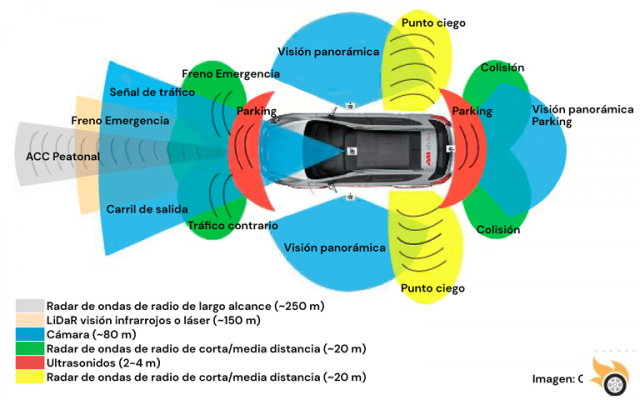 Article: ADAS systems in cars
Article: ADAS systems in cars
Introduction
Welcome to Pistonudos.com, where we are passionate about the automotive world and we love to keep you informed about the latest news and technological advances in the industry. In this article, we are going to talk about ADAS systems (Advanced Driver Assistance Systems) in cars, their operation, their importance in reducing accidents, the mandatory systems in cars and their definition.
What are ADAS systems?
ADAS systems are a series of technologies designed to help the driver have a safer and more comfortable journey. These systems use sensors and cameras to detect and analyze the vehicle's environment, providing information and assistance to the driver in real time. Some examples of ADAS systems are adaptive cruise control, autonomous emergency braking, lane keeping assist, and traffic sign recognition.
Operation of ADAS systems
ADAS systems use a combination of sensors, cameras, and advanced algorithms to collect and process information about the vehicle's environment. These sensors and cameras are located in different parts of the car, such as the windshield, mirrors, and bumpers. The collected information is analyzed in real time and used to make decisions and provide driver assistance.
For example, adaptive cruise control uses radar sensors to detect the distance and speed of vehicles ahead. If the car in front slows down, the ADAS system will automatically adjust the speed of the vehicle to maintain a safe distance. Similarly, Autonomous Emergency Braking uses sensors to detect obstacles on the road and, if necessary, will automatically apply the brakes to avoid a collision.
Importance of ADAS systems to reduce accidents
ADAS systems play a crucial role in reducing road accidents. According to studies carried out, it is estimated that these systems can reduce traffic accidents by up to 30%. This is because ADAS systems help prevent collisions, alert the driver to potential hazards, and improve response capabilities in emergency situations.
Additionally, ADAS systems can also help reduce the severity of accidents that do occur. For example, autonomous emergency braking can prevent or mitigate the impact of a collision, thereby reducing injuries and property damage.
Mandatory ADAS systems in cars
In many countries, regulations are being implemented that require the inclusion of certain ADAS systems in new cars. These regulations aim to improve road safety and reduce accidents. Some of the mandatory ADAS systems include Autonomous Emergency Braking System, Lane Keeping Assist, and Traffic Sign Recognition.
It is important to note that these systems do not replace the responsibility of the driver, but rather act as an additional aid to improve driving safety. Drivers should always keep their attention on the road and follow the traffic rules.
Frequently Asked Questions (FAQs)
1. What is the difference between ADAS systems and autonomous driving?
ADAS systems and autonomous driving are related but different concepts. ADAS systems are technologies that assist the driver in driving, providing information and assistance in real time. On the other hand, autonomous driving refers to the ability of a vehicle to drive autonomously, without human intervention. Although some ADAS systems can be considered as a step towards autonomous driving, we are still far from fully autonomous cars on the roads.
2. Do all new cars come equipped with ADAS systems?
No, not all new cars come equipped with ADAS systems. The inclusion of these systems in cars depends on the manufacturer and the model of the vehicle. However, more and more manufacturers are incorporating ADAS systems into their cars as standard or as additional options. It is important to check the specifications of the vehicle before purchasing it if these advanced assistance systems are desired.
Conclusion
In summary, ADAS systems are advanced technologies that help improve road safety and reduce accidents on the roads. These systems use sensors and cameras to provide information and assistance to the driver in real time. They are especially important in preventing collisions, alerting the driver to potential hazards, and improving responsiveness in emergency situations. Also, some ADAS systems are mandatory on new cars in many countries, as part of efforts to improve road safety. Always remember to keep your attention on the road and follow the traffic regulations, since ADAS systems are an additional help but do not replace the responsibility of the driver.
We hope this article has been useful to you and has provided you with valuable information about ADAS systems in cars. If you have any questions or comments, feel free to leave them below. We would love to hear your opinion!
Until next time!
The Pistonudos.com team


























